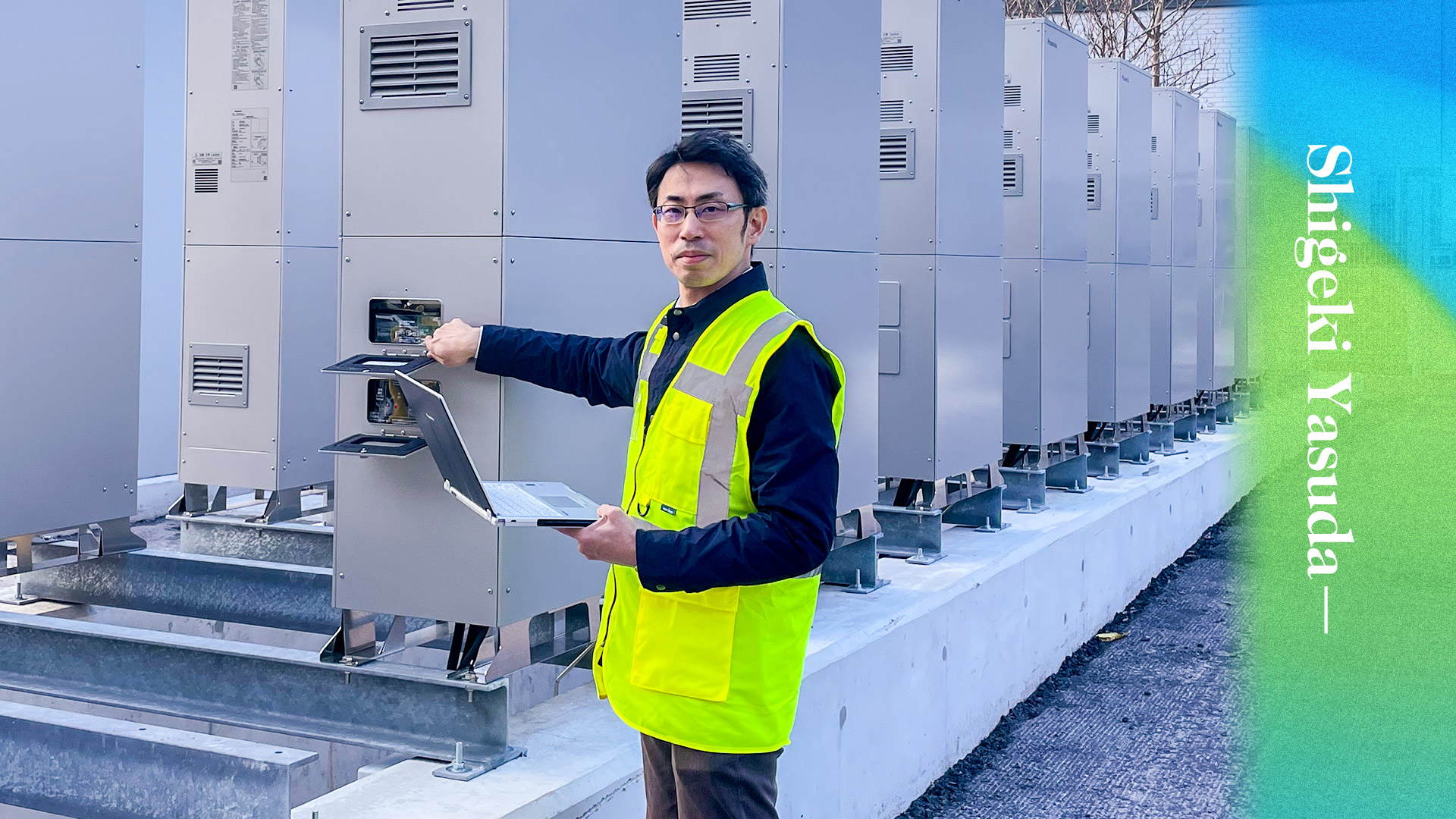
Feb 07, 2025
- Sustainability
- Feature Story
Panasonic Group People
Aiming for a Clean, Decarbonized Society with Panasonic HX: Shigeki Yasuda- Panasonic GREEN IMPACT
- Europe and CIS

Eighty years ago, on December 15, 1935, in conjunction with our company's incorporation, we adopted the division company system and thereby established nine division companies based on the different types of business.
Photo: Konosuke Matsushita in 1933 (front row, second from left)
During the days of private ownership, Konosuke Matsushita already had a vision of "A company is something entrusted to us by society" and advanced management accordingly. In December 1935, as the president of Matsushita Electric Industrial Co., Ltd., he explained the reasons for this corporate reorganization in his message to all employees.
In the business world, we often see a company becoming a joint-stock corporation for the purpose of obtaining capital or human resources from outside. But, our company is doing this for completely different reasons.
Matsushita Electric's business scale has grown bigger and the workforce has been expanding. In some aspects, today we are standing as a huge production organ for the society. Therefore, I feel a strong sense of responsibility to further improve and expand this production organ in the future. At the same time, having a system to disclose our business conditions to the public matches the principle of fairness and honesty. Here lies the first reason for this corporate reorganization.
From today, our company is operating as a joint-stock company. However, our management policy remains unchanged. It is my sincere hope that as in the past, by bringing our hearts together we will continuously work to increase our contribution to society.
As a result of incorporation, Matsushita Electric Industrial Co., Ltd. began managing its division companies as a holding company, particularly in terms of human resources and accounting. Each division company further committed itself to autonomous responsible management. The incorporation process was smoothly advanced because of the division system our company had started two years before in 1933.
In May 1933, Konosuke Matsushita divided the factory complex into three divisions so as to have each division responsibly manage the product categories they were in charge of. The First Division handled radios; the Second Division lamps and dry cell batteries; and the Third Division wiring devices, synthetic resins, and electrothermal products.
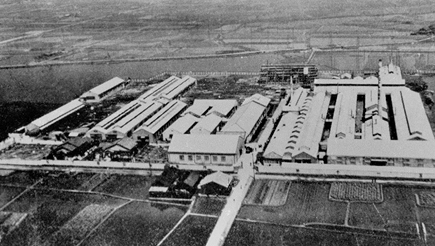
No. 11 Plant completed in 1933(current Moriguchi Plant, AIS Company)
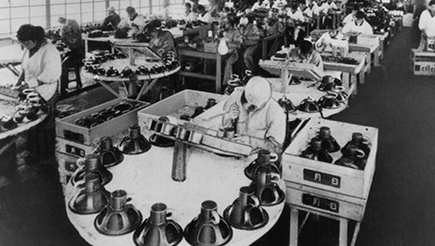
No. 7 Plant in the same year (Juso, Osaka) that manufactured speakers
The First Division was in charge of both manufacturing and sales from the start, and other divisions did the same in February the following year. In addition, the electrothermal product department was separated from the Third Division and became the Fourth Division. Through this structural reform, the respective divisions became responsible for controlling their factories and offices as financially independent business organs comprehensively managing development of products, manufacturing, sales, and even financial performance.
Konosuke Matsushita talked about the significance of the division system by looking back on the time when the electrothermal product division was established in 1927, which became the model for the division system.
When we were operating on a small scale, my sole control was good enough. But, as more new tasks were added, it became hard for me alone to keep track of everything. Nevertheless, I needed to closely check one thing at a time and in some cases I had to say, "Can you wait a minute? I am thinking about something different now." I didn't think that was the way it should be.
Then, I thought about having someone else be in charge of electrothermal products. When I was assigning a person to take charge, I came up with the idea that the person could take the full responsibility. So, I said, "It's about time for Matsushita Electric to start making electrothermal products. But, I really can't do it myself. So, I want you to take this job" and gave the person full authority. When I said, "I want you to take this job," I meant that the person was assigned as the chief executive of the business. Even though the scale of business was small, I entrusted the person to do everything. This was the beginning of the division system of Matsushita Electric.
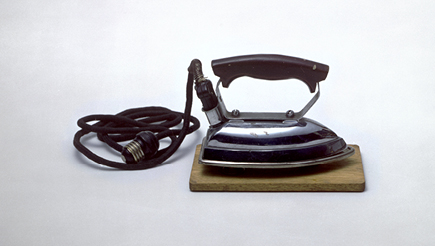
Super Iron released in 1927. A price 20 to 30% lower than competitors was realized through mass production, which facilitated dissemination of irons in Japan.
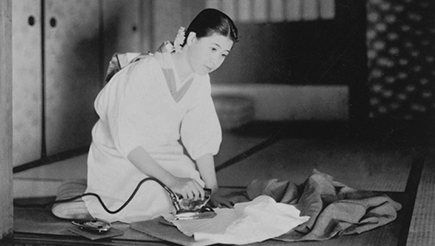
Japanese homemaker using a Super Iron
Business division managers powerfully showed their ability and ingenuity in the business field in their charge. At each division, more workers acted autonomously and with enthusiasm in their business activities. At that time, Matsushita Electric was still an independently operated midsize business, however, it was gradually producing successful results in various new business fields. Further, being financially independent, each division naturally controlled itself so as not to expand business beyond its strength. Thus, while management was carried out aggressively, profits were steadily secured.
Stated another way, with a focus on a specific business field and by directly connecting manufacturing and sales, each division managed to conduct agile operations to quickly respond to market trends, which small scale businesses are good at. At the same time, the framework was laid out to grow to be a big company as a collective entity consisting of various business units.
Soon after Konosuke Matsushita implemented company management, he would delegate classified tasks to employees, including new recruits, with a view to developing the business and growing people. Here, we can see the origin of the division system of Matsushita Electric. Though this approach was taken out of necessity in those days, proactively entrusting employees with work eventually led to organizational strategies. Konosuke Matsushita explained his objective as follows:
By forming divisions, the business results can be made clear and responsible management intensified. In this context, the division system itself needs to be examined so that it is operated properly. There is no justification for transferring a portion of the profits produced by one division to another division. Each division must support itself with its own profits.
Through this way of conduct, competent business managers can be nurtured. In other words, the division system provides workers with a place where they go through truly hard managerial training. Fortunately, since Matsushita Electric did this from early on, many employees grew up to become competent business managers.
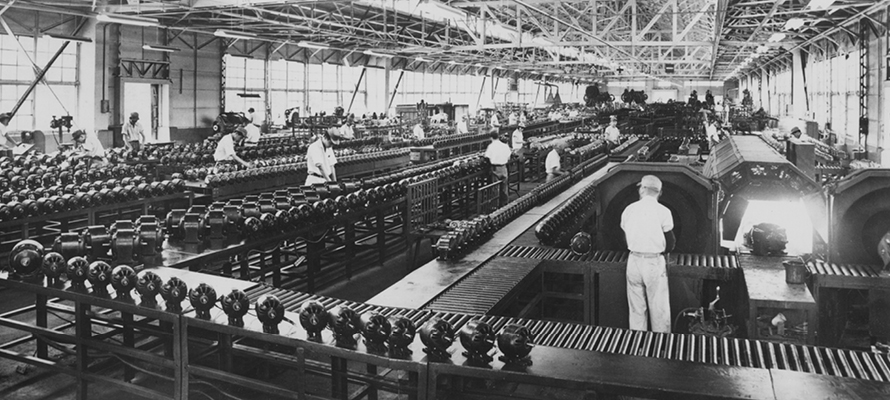
Motor production site in 1933
The content in this website is accurate at the time of publication but may be subject to change without notice.
Please note therefore that these documents may not always contain the most up-to-date information.
Please note that German, French and Chinese versions are machine translations, so the quality and accuracy may vary.